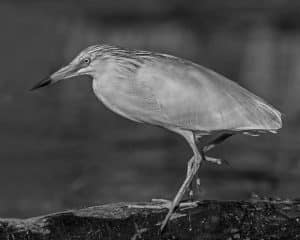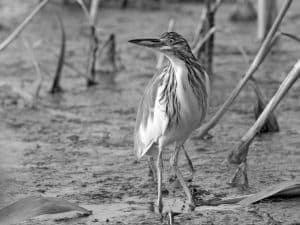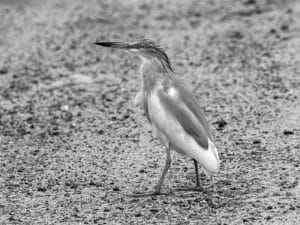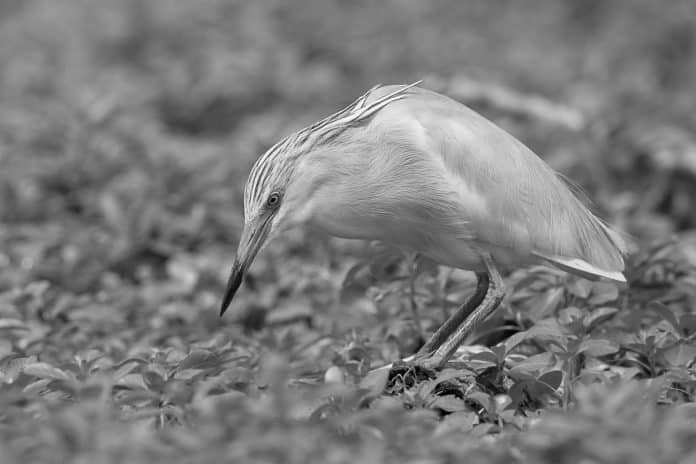Introduction to the Squacco Heron
Welcome to the breathtaking world of the Squacco Heron in Tanzania. The Squacco Heron in Tanzania, scientifically known as Ardeola ralloides, is a stunning bird species that thrives in the diverse ecosystems of Tanzania. This elegant heron is characterized by its striking yellow-orange plumage, long neck, and distinctive breeding plumage, which makes it a sought-after sight for bird enthusiasts and nature lovers. The Squacco Heron is a captivating creature that adds to the rich biodiversity of Tanzania, drawing attention to the importance of preserving its natural habitats and ensuring the sustainability of its populations.

The Squacco Heron is an avian marvel that captivates the hearts of those who have the privilege of witnessing its grace and beauty in the wild. As you delve into the world of the Squacco Heron in Tanzania, you will discover the intricate details of its habitat, nesting behavior, migration patterns, and the vital role it plays in the delicate balance of the ecosystem. Join us on this fascinating journey as we unravel the wonders of the Squacco Heron and gain a deeper understanding of its significance in the natural tapestry of Tanzania.
Habitat of the Squacco Heron in Tanzania
Tanzania, with its diverse landscapes ranging from savannas and grasslands to wetlands and coastal regions, provides an ideal habitat for the Squacco Heron. These magnificent birds can be found in a variety of wetland habitats, including marshes, swamps, lakeshores, and riverbanks, where they thrive in the presence of shallow water and abundant vegetation. The rich biodiversity of Tanzania’s wetlands offers the Squacco Heron a bountiful supply of food, including fish, amphibians, insects, and small reptiles, making it an essential part of the intricate food web in these ecosystems.
The Serengeti, the Ngorongoro Conservation Area, and the Selous Game Reserve are among the notable areas where the Squacco Heron can be observed in Tanzania. These vast and diverse landscapes provide the perfect combination of water sources and vegetation that sustains the Squacco Heron population. As you explore the wetlands and waterways of Tanzania, keep a keen eye out for the elegant silhouette of the Squacco Heron as it gracefully forages for its next meal or perches amidst the aquatic foliage, blending seamlessly into its natural surroundings.
Nesting Behavior of the Squacco Heron

The nesting behavior of the Squacco Heron is a fascinating aspect of its life cycle, offering a glimpse into the intricate rituals and habits of these remarkable birds. During the breeding season, which typically occurs during the wet season in Tanzania, Squacco Herons engage in elaborate courtship displays, including aerial acrobatics and vocalizations, to attract a mate and establish their breeding territories. Once paired, these herons build their nests in colonies, often in dense reed beds or low trees near water bodies, creating a bustling community of nesting sites that dot the wetland landscapes.
The female Squacco Heron lays a clutch of eggs, usually numbering three to five, in a neatly constructed nest made of twigs, reeds, and other plant materials. Both the male and female take turns incubating the eggs and caring for the young, demonstrating a remarkable level of parental dedication. As the chicks hatch, they are fed a diet of regurgitated food by their attentive parents, gradually growing in strength and agility under the protective watch of their guardians. Witnessing the nesting behavior of the Squacco Heron is a remarkable experience that provides a glimpse into the nurturing and interconnectedness of the avian world.
Migration Patterns of the Squacco Heron
The Squacco Heron is known for its remarkable migration patterns, embarking on long journeys that span continents and connect distant habitats. In Tanzania, these graceful birds undertake seasonal migrations, with some individuals traveling to and from their breeding grounds in response to changes in food availability and environmental conditions. As the wetlands of Tanzania undergo seasonal fluctuations in water levels and prey abundance, the Squacco Heron exhibits a dynamic response, migrating to areas that can better support their survival and reproductive needs.
During the non-breeding season, Squacco Herons may disperse to a wider range of wetland habitats, including coastal estuaries, rice fields, and other shallow water bodies, where they can find an abundance of food resources. The interconnected network of wetlands across Tanzania and beyond serves as vital stopover sites for migrating Squacco Herons, highlighting the importance of preserving these critical habitats to ensure the continuity of their migration routes. By observing the migration patterns of the Squacco Heron, we gain a deeper appreciation for the resilience and adaptability of these avian travelers as they navigate the changing landscapes of Tanzania.
Conservation Efforts for the Squacco Heron in Tanzania
Tanzania is dedicated to the conservation of its rich avian biodiversity, including the protection of the Squacco Heron and its vital habitats. The government, in collaboration with conservation organizations and local communities, has implemented various initiatives aimed at safeguarding the wetlands and waterways that are essential for the survival of the Squacco Heron. Through the establishment of protected areas, wetland management plans, and community-based conservation projects, Tanzania is working towards ensuring a sustainable future for the Squacco Heron and other vulnerable species that rely on these critical ecosystems.
Efforts to monitor and research the population dynamics, nesting success, and migration behaviors of Squacco Herons in Tanzania provide valuable insights that inform conservation strategies and management decisions. By engaging in public awareness campaigns, educational programs, and ecotourism activities, Tanzania seeks to foster a sense of stewardship and appreciation for the natural heritage embodied by the Squacco Heron. The collaborative efforts of government agencies, conservationists, and local stakeholders are instrumental in creating a harmonious coexistence between human activities and the conservation of the Squacco Heron and its habitats in Tanzania.
Best Places to Spot Squacco Herons in Tanzania
Tanzania offers a myriad of enchanting locations where you can immerse yourself in the captivating world of the Squacco Heron. From the renowned national parks to the lesser-known wetland sanctuaries, each destination presents a unique opportunity to witness the beauty and grace of these elegant birds in their natural habitats. The Serengeti National Park, with its iconic savannas and waterways, provides a picturesque backdrop for encountering Squacco Herons amidst the diverse wildlife that inhabits this vast landscape.
The Ngorongoro Conservation Area, home to the breathtaking Ngorongoro Crater, offers a glimpse into the stunning diversity of ecosystems where Squacco Herons find refuge and sustenance. The verdant wetlands and marshes within this conservation area provide an ideal setting for observing the tranquil presence of Squacco Herons as they navigate the shallow waters in search of prey. For those seeking a more off-the-beaten-path experience, the Selous Game Reserve beckons with its untamed wilderness and pristine riverine habitats, where Squacco Herons can be observed in a serene and unspoiled environment.
Photography Tips for Capturing Squacco Herons

Capturing the timeless elegance of the Squacco Heron through photography is a rewarding endeavor that allows you to immortalize the beauty of these remarkable birds. When photographing Squacco Herons in Tanzania, consider the following tips to enhance your chances of capturing striking images that showcase their grace and allure. Patience is key when photographing wildlife, so take the time to observe the behavior of Squacco Herons and anticipate their movements as they forage, preen, or take flight.
Utilize natural light to illuminate the vibrant plumage and intricate details of the Squacco Heron, choosing early morning or late afternoon hours for optimal lighting conditions. Position yourself strategically to capture the reflection of the heron in the tranquil waters of the wetlands, adding a captivating dimension to your photographs. Employ a telephoto lens to capture close-up shots of Squacco Herons while maintaining a respectful distance that minimizes disturbance to the birds and their natural activities.
The Role of Squacco Herons in the Ecosystem
Squacco Herons play a crucial role in the delicate balance of the ecosystem, contributing to the regulation of aquatic populations and the dynamics of wetland habitats. As adept hunters, Squacco Herons help control the abundance of fish, amphibians, and invertebrates in their foraging areas, preventing overpopulation and maintaining the ecological equilibrium of the wetlands. By feeding on a diverse array of prey species, Squacco Herons contribute to the stability of food webs, influencing the distribution and abundance of organisms within their ecosystems.
Furthermore, the presence of Squacco Herons in wetland habitats can serve as indicators of environmental health, reflecting the quality of water sources and the overall integrity of these critical ecosystems. Monitoring the population trends and behaviors of Squacco Herons provides valuable insights into the state of wetland environments and the potential impacts of human activities on these sensitive areas. By recognizing the intrinsic value of Squacco Herons in the broader context of ecosystem dynamics, we can appreciate their significance as stewards of the natural world and advocates for wetland conservation.
Threats to the Squacco Heron Population
While the Squacco Heron embodies resilience and adaptability, it faces a range of threats that pose significant challenges to its populations in Tanzania. Habitat loss and degradation due to human activities, including agriculture, urbanization, and infrastructure development, have encroached upon the wetlands and waterways that are vital for the survival of Squacco Herons. The conversion of natural habitats into agricultural fields, the drainage of wetlands for industrial purposes, and the pollution of water bodies have resulted in the loss of critical nesting and foraging sites for these majestic birds.
Human disturbances, such as increased recreational activities, hunting, and disturbance of nesting colonies, can disrupt the breeding success and reproductive behaviors of Squacco Herons, leading to population declines and localized extinctions. Climate change and its associated impacts, including extreme weather events and alterations in precipitation patterns, also pose challenges to the stability of wetland ecosystems and the availability of suitable habitats for Squacco Herons. Addressing these threats requires a concerted effort to mitigate human-induced impacts and promote sustainable practices that prioritize the conservation of wetlands and the species that depend on them.
Conclusion
As we conclude our exploration of the Squacco Heron in Tanzania, we are reminded of the profound beauty and ecological significance embodied by this captivating bird. From its enchanting habitat and nesting behaviors to its remarkable migration patterns and conservation needs, the Squacco Heron offers a compelling narrative that underscores the importance of preserving the natural heritage of Tanzania. By recognizing the interconnectedness of all living beings and the intricate web of life that sustains us, we embrace a collective responsibility to safeguard the habitats and species that enrich our world.


































